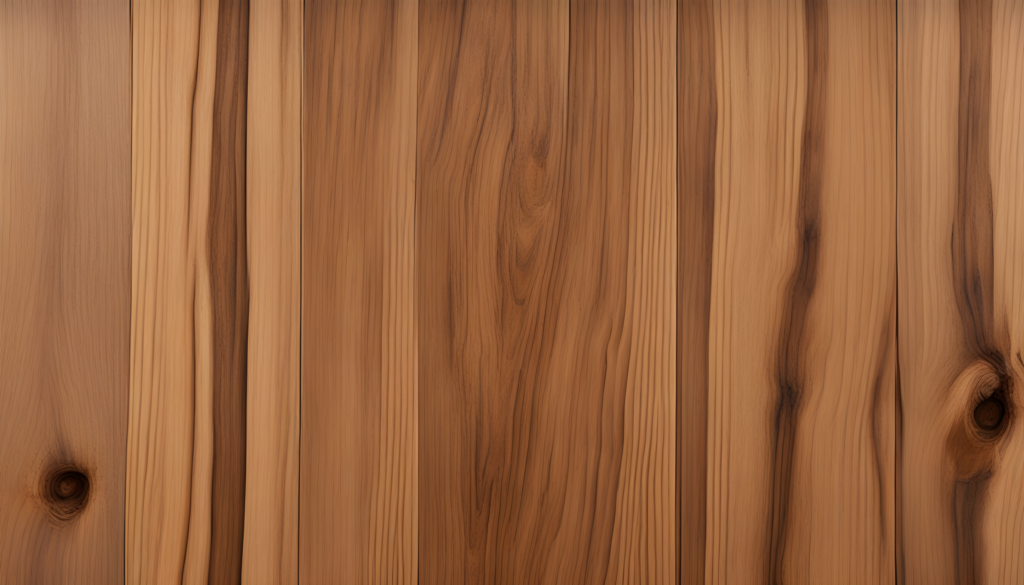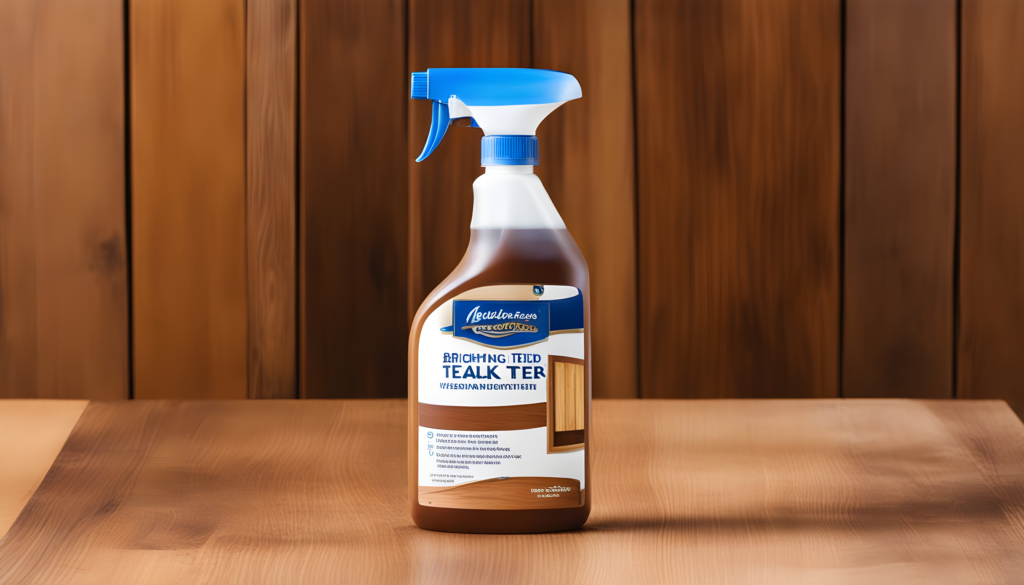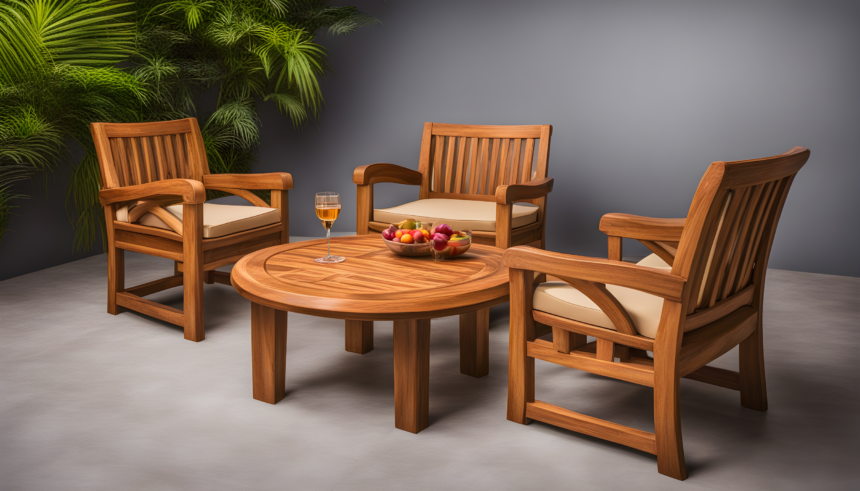Teak wood is renowned for its exceptional durability and stunning natural beauty, making it a popular choice for outdoor furniture. However, even the most robust teak furniture can succumb to the elements over time, becoming weathered and losing its luster. The good news is that with the right care and attention, you can restore your weathered teak outdoor furniture to its former glory. In this comprehensive guide, we’ll walk you through the step-by-step process of rejuvenating your weathered teak furniture, ensuring that it not only regains its original splendor but also stands the test of time. Whether you’re a seasoned DIY enthusiast or a complete novice, this article has got you covered.
1: Understanding Teak Wood

Before we dive into the restoration process, it’s essential to understand the unique characteristics of teak wood. This knowledge will help you appreciate its beauty and durability and provide valuable insights into how to care for it effectively.
Teak wood is native to Southeast Asia and is highly sought after for its natural resistance to moisture, insects, and decay. It’s a hardwood with a high oil content, making it exceptionally durable and weather-resistant. The wood’s golden-brown color and fine grain give it a distinctive, luxurious appearance.
However, despite its innate strength, teak outdoor furniture is not immune to the effects of weather and time. Exposure to the sun, rain, and air pollutants can cause teak wood to turn gray, develop cracks, and lose its natural oils. This weathered appearance is not an irreversible state; with proper care, you can bring your teak furniture back to life.
2: Tools and Materials
Before embarking on your teak furniture restoration journey, you’ll need to gather the necessary tools and materials. A complete list is provided below to help you be ready:
Tools:
- A soft-bristle brush
- Sandpaper (in various grits)
- A clean cloth or sponge
- A bucket
- A garden hose with a spray nozzle
- Plastic or drop cloths
- Painter’s tape (for protecting non-teak parts)
- A paintbrush or foam brush
- A putty knife
Materials:
- Teak cleaner or homemade teak cleaning solution
- Teak brightener or homemade brightening solution
- Teak sealer or teak oil
- Safety goggles
- Disposable gloves
- A mask (for safety when sanding)
Now that you have everything you need let’s move on to the step-by-step process of restoring your weathered teak outdoor furniture.
3: Step-by-Step Weathered Teak Outdoor Furniture Restoration Guide

Image by Freepik
Step 1: Cleaning
- Prepare the Work Area: Start by placing plastic or drop cloths underneath your teak furniture to protect the ground or grass from any cleaning solution or debris.
- Dust and Debris Removal: Use a soft-bristle brush to remove any loose dirt, dust, or debris from the furniture’s surface. Ensure that the teak wood is clean and free of any obstructions.
- Teak Cleaner Application: Mix the teak cleaner according to the manufacturer’s instructions or create your homemade solution using a blend of water and mild dish soap. Apply the cleaner generously to the furniture using a cloth or sponge. Don’t let it dry; just let it rest for a while.
- Scrubbing: Gently scrub the teak wood using a soft-bristle brush to remove dirt and grime. Pay close attention to any stubborn stains or mildew spots. Rinse thoroughly with a garden hose or a bucket of clean water. Ensure that all the cleaning solution is removed.
Step 2: Sanding

- Drying: Let the cleaned teak furniture dry completely. This may take a day or more, depending on the weather conditions.
- Initial Sanding: Begin with coarse-grit sandpaper (80-100 grit) to remove the gray, weathered layer and smooth the wood. Sand away from the grain of the wood to protect the surface. To apply uniform pressure, use a sanding block or pad.
- Intermediate Sanding: Move on to finer-grit sandpaper (150-220 grit) to further smoothen the wood’s surface. This step prepares the wood for the application of teak brightener.
Step 3: Brightening

- Teak Brightener Application: Apply teak brightener as per the manufacturer’s instructions or prepare your homemade solution by mixing water with a small amount of oxalic acid. This will help to restore the wood’s natural color and remove any remaining stains or discolorations.
- Even Application: Use a paintbrush or foam brush to apply the brightener evenly to the entire surface of the teak furniture. Allow it to sit for about 15-20 minutes but avoid letting it dry.
- Rinse Thoroughly: Rinse the furniture thoroughly with a garden hose to remove the brightener and any residue. Make sure to rinse all surfaces to prevent any potential damage to the wood.
Step 4: Sealing
- Drying: Allow the teak furniture to dry completely for a minimum of 24 hours before applying the sealer or teak oil.
- Teak Sealer or Oil Application: Decide whether you want to use a teak sealer or teak oil. Teak sealers offer longer-lasting protection but may alter the wood’s appearance slightly. Teak oil enhances the natural color of the wood but requires more frequent reapplication. Apply your chosen product evenly in the direction of the wood grain.
- Reapplication: Depending on the product used, you may need to apply a second coat once the first coat has dried. Follow the manufacturer’s instructions for the recommended number of coats and drying times.
- Buffing: After the final coat, buff the teak furniture with a clean cloth to remove any excess sealer or oil and achieve a polished finish.
4: Maintenance Tips
Now that your teak outdoor furniture is beautifully restored, it’s important to maintain its appearance and durability. Here are some essential maintenance tips:
- Regular Cleaning: To prevent weathering, clean your teak furniture at least once a year, or more frequently if you live in a humid or rainy climate.
- Avoid Harsh Cleaners: Steer clear of abrasive cleaners and chemicals that can damage the wood. Stick to mild soap solutions or dedicated teak cleaning products.
- Use Furniture Covers: Consider using furniture covers during the off-season to shield your teak furniture from the elements.
- Reapply Sealer or Oil: Depending on your chosen product, plan to reapply sealer or teak oil as needed, typically every 1 to 3 years.
- Rotate and Reposition: To ensure even weathering, periodically rotate or reposition your furniture.
- Avoid Sharp Objects: Prevent scratches and dents by avoiding sharp objects or heavy impacts on your teak furniture.
Conclusion:
In conclusion, restoring weathered teak outdoor furniture is a rewarding DIY project that can breathe new life into your outdoor living spaces. By understanding the unique characteristics of teak wood and following the step-by-step restoration guide provided in this article, you can enjoy your teak furniture for years to come. Don’t forget to maintain your furniture regularly to protect your investment and keep it looking its best. Your outdoor space will thank you for the care and attention you’ve given to your teak furniture.
FAQs:
1. How often should I restore my weathered teak outdoor furniture?
Ideally, you should restore your teak outdoor furniture when you notice significant weathering, such as graying or cracks. This may occur every 2-5 years, but proper maintenance can extend the time between restorations.
2. Can I use teak oil on sealed teak furniture?
It’s generally recommended to stick with either teak oil or a teak sealer consistently. Mixing the two may result in an uneven finish.
3. Can I paint or stain my teak furniture instead of using teak oil or sealer?
While it’s possible to paint or stain teak furniture, it’s not recommended if you want to maintain the wood’s natural beauty. Painting or staining can hide the wood’s grain and color, which is one of the teak’s primary attractions.
4. How can I prevent teak furniture from weathering in the first place?
To prevent weathering, ensure that your teak furniture is well-maintained, cleaned regularly, and protected with covers during the off-season. Additionally, placing your furniture in shaded areas or using UV-resistant coatings can help.
5. What’s the difference between teak oil and teak sealer?
Teak oil enhances the wood’s natural color and requires more frequent reapplication. Teak sealer, on the other hand, provides longer-lasting protection and may slightly alter the wood’s appearance.







